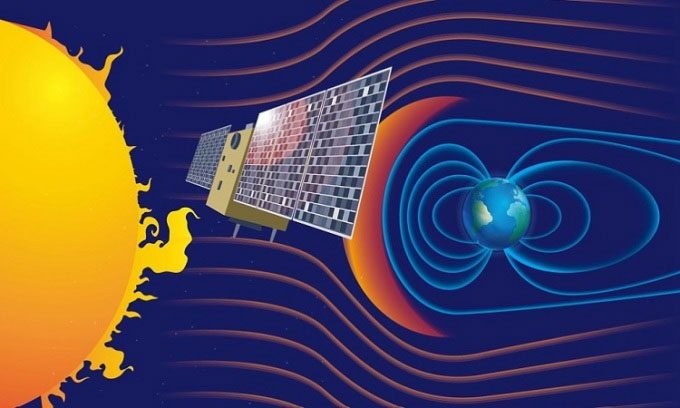China is set to launch a solar exploration satellite into an unprecedented orbit to study the star and monitor space weather.
The evaluation work for the Xihe-2 solar exploration mission at the Lagrange Point L5 between Earth and the Sun is nearing completion, Professor Fang Cheng from Nanning University, one of the satellite designers, shared at the 10th Advanced Space Technology Conference in Shanghai, as reported by CGTN on September 16. According to initial plans, the probe is expected to enter its designated orbit in 2026, aiming to explore the origins and evolution of the magnetic field in the Sun’s highly active regions, revealing the three-dimensional structure and physical mechanisms of solar flares.

Simulation of the probe operating in the orbit between Earth and the Sun. (Photo: CFP).
Lagrange Point L5 is located approximately 150 million kilometers from Earth, providing a unique vantage point for studying and monitoring space weather, as it allows capturing images of solar activity at least three days before they can be observed from Earth and measuring solar wind conditions about three to four days before they impact our planet. Xihe-2 will be the world’s first artificial probe to fly to this point.
“L5 remains a novel site for exploration. It is scientifically significant and technically feasible. It can also provide data for early warning and accurate forecasting of space weather,” Fang stated. On October 4, 2021, China launched its first solar exploration satellite, Xihe, into a geostationary orbit to conduct H-alpha spectroscopic imaging.
In addition to the solar probe, the Chinese lunar exploration project is also progressing steadily. Experts at the conference shared updates on the construction of a long-term underground lunar research station. Compared to Earth, the Moon lacks an atmosphere, resulting in extreme temperature variations between day and night, high-intensity cosmic radiation, and the risk of collisions with micrometeoroids, presenting numerous challenges for establishing a scientific research station, according to Zhang Chongfeng, deputy director of the lunar probe design team in China. However, underground lava tubes could provide shelter to avoid extreme temperatures, radiation, meteoroids, and lunar dust. Zhang and his team’s design features a lunar cave station with an energy center and communication support at the entrance, branching pathways for personnel and equipment, research laboratories, and living quarters.




















































